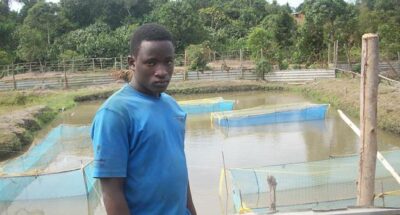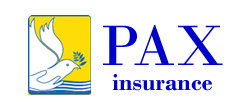
By; Caritas Uganda
02nd Sept. 2020
Aquaculture also known as aquafarming, is slowly becoming one of the lucrative agriculture source of earning in Uganda.
Aguaculture is the farming of fish, crustaceans, molluscs, aquatic plants, algae, and other organisms.
Uganda a home to at least 42 million people, a population that has tripled since 1969 with 70% of it comprised of youth. Her population growth has exerted pressure on the labour market, employment rate for youths aged 18-30 years stands at 13.3%.
Uganda is an agrarian economy with a high positive correlation between agriculture, and employment.
There is a growing importance of aquaculture reflected in employment trends, previously practiced at the subsistence level since the 1950s,investments in aquaculture are increasingly backed by rising market prices for fish, governmentintervention, the quest for profitable production, and stagnating supply from capture fisheries.Records from Bank of Uganda 2019, show that in the calendar year ending 2018, Uganda’s export earnings from fish were the highest the country has ever received in the last 20 years with a total exported fish worth $171 million (Shs635 billion) the highest revenue the country has ever earned from this commodity, besides its nutritional value to the people.
Caritas Uganda, with the dioceses of Arua, Gulu and Nebbi in partnership with Caritas Norway and Hauge Aqua introduced a Community aquaculture School in 2017 and became operational in 2018 to target the marginalized and vulnerable youth who missed on formal education and do not have extensive land for crop or animal rearing.
The UGX 3.6 Billion project implemented in a phased manner was planned to respond to two primary goals; first to ensure that the target youth obtain documented and transferable skills and qualifications that are in demand inthe aquaculture sector, or that contribute to entrepreneurship/ self-employment in aquaculture. The second is the creation of sustainable aquaculture businesses providing youth with employment opportunities and income.
To date two schools have been established, accredited by Ministry of education and sports. The certificates award to students on completing the six months training from these schools can lead to upgrading to higher level in the sector.
According to the program coordinator Hellen Chanikare at the Caritas Uganda National Offices located at the Uganda Episcopal Conference Nsambya, the school has graduated 499 youths in two years out of these 76 have started business in the fish value chain and are employing others rather than waiting to be employed. A fish hatchery with a capacity of hatching 50,000 cut fish and 30,000 tilapia per month has been established and is now operational in Arua.
Noting that quality feed is the one the most vital requirements in commercial fish farming, accounting for 50 to 60% of variable costs. Fish growth, health, reproductive efficiency and farm profitability are hinged on the quality of feed. The project has established a fish feed mill in Gulu with a capacity of producing 13MT per month, this is expected to increase to 45MT per month in the consequent years.
She mentioned that one main challenge for achievement of set target is access to credit for business start up for the youth. To mitigate this, the project is planning to partner with credit service providers to provide credit. Beneficiary youths are formed into groups to ease tracking of loans; a loan recovery strategy/model has been developed and approved by primary stakeholders. Secondly trainees are being encouraged to engage at various level of fish value chain that requires relatively lower capital.
Fish processing and preservation plans in under way to ensure that unsold fresh fish from the youth fish farmer groups are preserved bulked for longer shelf life.
They mainly produce Tilapia and Cut fish that is sold at the ninth to twelfth months weighing between 700g – 1kg cut fish and Tilapia sold at six months weighing between 300g and 500g”. On the open market a Tilapia of that weight can go up to UGX 10,000 to UGX15,000 per fish.
The project is currently concentrated in Gulu Archdiocese that comprises of civil districts of Amuru, Gulu, Nwoya, Lamwo, Kitgum, Agago and Paderand Arua Diocese comprising of Arua, Maracha and Madi-okolo districts with possibilities of spread to other parts of the country country.
Next:
Previous:




